4G LTE Motorola Moto G available now in US

In Mid-May, Motorola made the entry-level Moto G Android smartphone even more appealing to consumers on a budget by announcing the still-affordable 4G LTE-toting model. The faster cellular connectivity has been an oft-requested feature as more and more mobile operators roll out compatible networks across the globe.
This enables subscribers to experience faster data speeds, leading to an improved experience when it comes to things like web browsing and video streaming. Costing just $219, the 4G LTE Moto G is now ready to offer these kind of benefits to a large pool of potential buyers, as it goes on sale in US.
Microsoft launches OWA for Android

Following the release of the Outlook Web App for iPhone, Microsoft has finally introduced OWA for Android on Google Play. The app, which is currently labeled as "pre-release", is compatible solely with small handsets, and requires Office 365 for business mailboxes.
As OWA for Android undergoes testing, Microsoft says that it collects feedback, squashes bugs and ensures that the app is ready for general availability. However, even as it is, the app allows users to do "everything" that its iPhone counterpart offers, with the only difference being the ability to update contact information directly from Android.
HTC Desire 610: A not-so-good Android smartphone [Review]
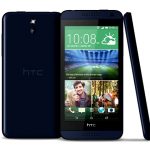
HTC has been extremely busy recently in terms of unleashing handsets upon us. Over a period of just a few weeks I have reviewed the flagship HTC One M8, the smaller format HTC One mini 2, and the HTC Desire 816. Now, with barely a pause for breath following those last two reviews, here comes the HTC Desire 610.
Styled by HTC as a good value, entertainment-focused handset, the Desire 610 costs around £235. It shares a lot of design features with its more expensive, higher specified cousin the Desire 816, which will set you back close to £300. So, if you need to save money but like what the Desire 816 has to offer, is this handset a good buy?
Android 4.4 KitKat shows tremendous growth

At WWDC 2014, while talking about iOS 8, Apple CEO Tim Cook took a stab at Android, saying that its latest iteration, version 4.4 KitKat, is only running on nine percent of Android devices. The figure is certainly lower than for iOS 7, which borders on 90 percent adoption. However, as we have become accustomed to, at the beginning of each month Google gives us a fresh set of numbers, which can quickly tell a different story.
The figure Cook used then was from early-May, which was, indeed, from the most-recent data. Skip forward one month, and we see Android 4.4 KitKat posting a 60 percent growth, reaching 13.6 percent distribution. The increase is noteworthy, and suggests that we can expect similar results come future distribution updates.
Motorola rolls out Android 4.4.3 KitKat, makes Moto X $100 cheaper

Shortly after Google launched Android 4.4.3 and released new factory images for its Nexus devices, Motorola announced, earlier today, it too is rolling out the latest version of Android.
The upgrade is set to reach the T-Mobile Moto X, Moto G (purchased online in US and retail in Brazil, including the 4G LTE version) and Moto E (purchased online in US), starting this week. Here is what the update includes.
Android 4.4.3 KitKat available now, here's how you can install it

Google Nexus 4, 5, 7 and 10 users are in for a treat, as Android 4.4.3 KitKat is now rolling out. The latest version of the operating system is also available to customers of US mobile operator T-Mobile, which has revealed the sort of changes users can expect from the upgrade.
Android 4.4.3 KitKat is not a major upgrade over its predecessor, as T-Mobile says there are no new features in tow, but only improvements related to security and the customary fixing of bugs. The US mobile operator lists the upgrade as rolling out starting June 2, for its Nexus-toting customers.
ASUS unveils a slew of Android tablets
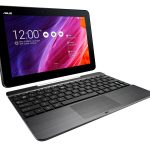
You may not be aware of it, but technology fair Computex kicks off tomorrow, in Taiwan. And, as we have come to expect from companies attending such events, many products are already announced come opening day. Local player ASUS is among the early birds, as today it takes the wraps off a slew of Android slates, among other products like monitors and routers.
Perhaps the biggest news is that ASUS has made the jump to 64-bit processors across the new models, using the Intel Atom Z3745 in the MeMO Pad and Transformer Pad lineups, and the Atom Z3560 in the Fonepad series. Android 4.4 KitKat is the operating system of choice which runs on these slates.
Samsung Galaxy S5 gets the Active treatment
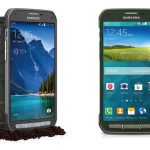
Last year, South Korean maker Samsung introduced a number of variations of its Android flagship smartphone, the Galaxy S4, among which was a ruggedized model designed to work in harsh conditions. Dubbed the Galaxy S4 Active, it could even shoot video and play music through headphones underwater.
The specs of the new Galaxy S5 suggest that Samsung put an end to the Active designation, as the smartphone comes IP67-certified out-of-the-box. This means it is both dust and water-resistant, which suffices for those who do not leave their Galaxy S5 in the desert, construction sites, fish tanks, hot tubs, lakes and the like. Samsung, however, seems to think a Galaxy S5 Active has its place, as the smartphone was just unveiled.
LG G3 goes up for pre-order
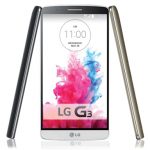
Yesterday, South Korean maker LG unveiled its much-awaited and much-leaked G3 Android flagship. My colleague Brian Fagioli, who was in New York at the press event, is impressed by the new smartphone, saying "the experience is greater than the sum of its (awesome) parts".
Less than a day after its unveiling, the G3 is already available to pre-order at UK retailer Clove. And, if you want to get your hands on the smartphone as soon as it is available on the market, you have to shell out £499. That is about €615 for those who live in other countries on the old continent. Those who live outside of Europe can forgo paying VAT, and get the G3 for £415.83, that equates to roughly $698.
Motorola Moto E: An attractive and affordable Android smartphone [Review]

Anyone who regularly reads my handset reviews will know how important the Motorola Moto G has been. Since last November it has overshadowed every phone aiming at the £150 price range, and quite a lot priced a fair bit higher. Now Motorola wants the Moto E to achieve the same kind of dominance -- this time at the entry-level end of the phone market. The Moto E can be yours for £89 SIM-free.
By modern standards this is a small handset -- its screen is only 4.3-inches. It is amazing how much the landscape has changed over the last few years, so that a 4.3-inch phone seems small and 5-inch feels like the optimum size.
HTC unveils the not-so-small One mini 2

Not too long ago, a 4.5-inch display was considered to be on the large side for a smartphone. Manufacturers which dared to go past it were few and far between. Yet here we are today, in a time when that screen size only appears to be associated with small versions of flagships, like HTC's new One mini 2 which is the younger brother of the One (M8). (I wonder what the guys and gals from HTC were thinking right before they decided on the name One mini 2.)
The One mini 2 comes with similar features as its bigger brother, like the Sense 6 user interface, the BoomSound audio and BlinkFeed. It has nothing to be embarrassed about, at least as far as specs go, as HTC uses decent components that should ensure it does not feel underwhelming in daily usage.
OnePlus One: Android smartphone with flagship-worthy specs, but affordable price
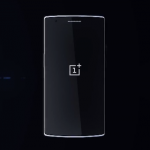
It has been often said that hardware specifications do not matter, yet nowadays people are still excited to see manufacturers going with the latest and greatest processors, lots of RAM, high-resolution displays and so on. When an impressive configuration is offered at a low price, such a handset is poised to get us talking. The Google Nexus 5 is a great example.
OnePlus is a new smartphone manufacturer that has followed this recipe to the letter. The One, that the company unveiled earlier today, is an Android handset that undercuts even the mighty Nexus 5, while bringing more to the table. OnePlus touts it as the "2014 flagship killer". Is that overselling it?
HTC One (M8): From quality comes Android greatness [Review]
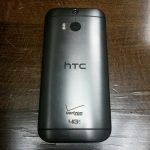
Smartphones are very personal -- one device cannot fit all. Some people love the phablet craze, declaring enormous devices such as the Samsung Galaxy Note 3 as the best. However, others will say it is too big. Even more will decry the fact that it runs Android and not their favorite mobile OS of choice, iOS or Windows Phone.
So, in reality, if a reviewer says something is the best, or perfect, it is the best or perfect for them. For you, maybe it would be a poor choice. But, if you do prefer Android, the nice thing is, those devices come in many shapes and sizes, so you can make your own choice. With all of that said, for me, the HTC One (M8) is the best Android phone available and it is damn-near perfect, save for a few minor gripes.
Meet HTC's new One (M8)

After a string of unexciting smartphones, last year, HTC wowed Android fans all over the world with the One. For the first time, in my opinion, a smartphone powered by the little green droid looked attractive. It did not take part in the silly specs race, as, at the time, the display was not the largest in its class, the processor was not the fastest around and it was not even the most compact Android smartphone given its specs. However, it performed well and offered unique software features, which, combined with the stunning looks, made it one of the best-received smartphones of the year. Sadly for HTC, it was not quite the sales success the company hoped it would be.
Because the original One set the bar so high, it will be interesting to see how its successor will stack up. It has pretty high expectations to live up to. Luckily, we do not have to wait long to find out, as HTC just took the wraps off the new One (M8). The name is not as inspiring, but it does pack a fair punch.
Sony rolls out Android 4.4 KitKat for flagship Xperia smartphones

Most Android smartphones and tablets do not run the latest-available version of Android, as vendors choose older iterations, even for their flagship products. As a result, it can take many months -- or it may never even happen -- for a software upgrade to finally close the gap.
One of the vendors that finds itself in this situation quite often is Japanese maker Sony, which cannot seem to release a high-end device, like the Xperia Z, Xperia Z1, Xperia Z Ultra or Xperia Z Compact, without shipping it with a dated version of Android. Luckily, KitKat commences its much-awaited roll-out for the company's most-recent flagship smartphones and tablets.
Recent Headlines
Most Commented Stories
BetaNews, your source for breaking tech news, reviews, and in-depth reporting since 1998.
Regional iGaming Content
© 1998-2025 BetaNews, Inc. All Rights Reserved. About Us - Privacy Policy - Cookie Policy - Sitemap.